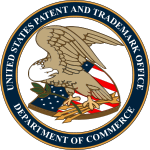 Last Friday, at the Biotechnology Industry Organization (BIO) IP & Diagnostics Symposium in Alexandria, VA, the U.S. Patent and Trademark Office provided additional information regarding changes that the Office plans to make to its controversial Myriad-Mayo Guidance. The Myriad-Mayo Guidance, which was issued on March 4, implemented a new procedure for determining the subject matter eligibility of claims under 35 U.S.C. § 101 in view of the Supreme Court's decisions in Association for Molecular Pathology v. Myriad Genetics, Inc. (2013), and Mayo Collaborative Services v. Prometheus Laboratories, Inc. (2012). In response to public feedback regarding the Guidance, the Office hinted at the BIO International Convention in June that changes to the Guidance might be forthcoming (see "Docs @ BIO: USPTO Provides Update on Myriad-Mayo Guidance"), and then provided a stronger indication that revised Guidance was imminent at the Office's first Bicoastal BCP (BCBCP) earlier this month (see "USPTO Expected to Issue Revised Myriad-Mayo Guidance in October").
Last Friday, at the Biotechnology Industry Organization (BIO) IP & Diagnostics Symposium in Alexandria, VA, the U.S. Patent and Trademark Office provided additional information regarding changes that the Office plans to make to its controversial Myriad-Mayo Guidance. The Myriad-Mayo Guidance, which was issued on March 4, implemented a new procedure for determining the subject matter eligibility of claims under 35 U.S.C. § 101 in view of the Supreme Court's decisions in Association for Molecular Pathology v. Myriad Genetics, Inc. (2013), and Mayo Collaborative Services v. Prometheus Laboratories, Inc. (2012). In response to public feedback regarding the Guidance, the Office hinted at the BIO International Convention in June that changes to the Guidance might be forthcoming (see "Docs @ BIO: USPTO Provides Update on Myriad-Mayo Guidance"), and then provided a stronger indication that revised Guidance was imminent at the Office's first Bicoastal BCP (BCBCP) earlier this month (see "USPTO Expected to Issue Revised Myriad-Mayo Guidance in October").
Representing the USPTO once again was June Cohan, Legal Advisor with the USPTO's Office of Patent Legal Administration, who appeared on a panel that also featured Sherry Knowles of Knowles IP Strategies (former Senior Vice President and Chief Patent Counsel at GlaxoSmithKline) and Patent Docs author Kevin Noonan. Ms. Cohan had previously presented on the Guidance at the biotechnology/chemical/pharmaceutical (BCP) customer partnership meeting in April, a BIO Intellectual Property Counsels Committee (IPCC) workshop that same month, the BIO International Convention in June, and the BCBCP meeting on September 17. At the BCBCP meeting, Ms. Cohan indicated that the Office intended to release "revised" Guidance in about a month. She also briefly discussed what the Office had learned from the more than eighty comments the Office had received on the Myriad-Mayo Guidance.
At last week's BIO Symposium, Ms. Cohan began by dispensing the bad news first. Noting that there are different ways to interpret relevant Supreme Court decisions on subject matter eligibility, she noted that the revised Guidance would not be confined to DNA because the Court's Myriad decision "does not stand alone."
Moving on to the good news, Ms. Cohan listed four expected changes to the Guidance's initial iteration. First, she conceded that the Office had cast "too broad a net," pointing out that a subject matter eligibility analysis should focus on claims that are "directed" to a judicial exception rather than to claims "involving" or "reciting" a judicial exception.
With respect to showing whether a claim is directed to a product that is markedly different from a naturally occurring product, Ms. Cohan acknowledged that "we were a little narrow before," and that the Office needed to consider functional differences and "other things" (perhaps utility) as opposed to just structural differences. As Andrew Hirshfeld, USPTO Deputy Commissioner for Patent Examination Policy, first noted at the BIO International Convention, Ms. Cohan reiterated that the Guidance's "significantly different" standard was not a new legal standard, but rather was merely a "teaching tool" for examiners. In a somewhat surprising announcement, Ms. Cohan pledged that "you won't see this term again," suggesting that the teaching tool would be eliminated in the revised Guidance.
Also slated for elimination in the revised Guidance are the twelve factors that weigh towards or against eligibility. Ms. Cohan conceded that the twelve-factor test was too complex and needed to be simplified, adding that "you won't be seeing twelve factors again."
Finally, Ms. Cohan noted that a number of comments had provided examples and that the Office was "thinking of using many of them." She also noted that the Office was planning to clarify many of the inferences that should be drawn from the current examples.
Ms. Cohan concluded her presentation by providing a nice summary of several recent cases on subject matter eligibility, including Alice Corp. v. CLS Bank International (2014); In re Roslin Institute (Fed. Cir. 2014); SmartGene, Inc. v. Advanced Biological Laboratories, SA (Fed. Cir. 2014); Ultramercial, Inc. v. Hulu, LLC (Fed. Cir. 2013); and the return of Myriad to the Federal Circuit (see "Federal Circuit Argument in Myriad Appeal Scheduled"). She also indicated that the timeline for the release of the revised Guidance was "late October" or shortly thereafter.
Patent Docs plans to provide a summary of the presentation Sherry Knowles gave at the IP & Diagnostics Symposium regarding the impact of the Guidance in a subsequent post.